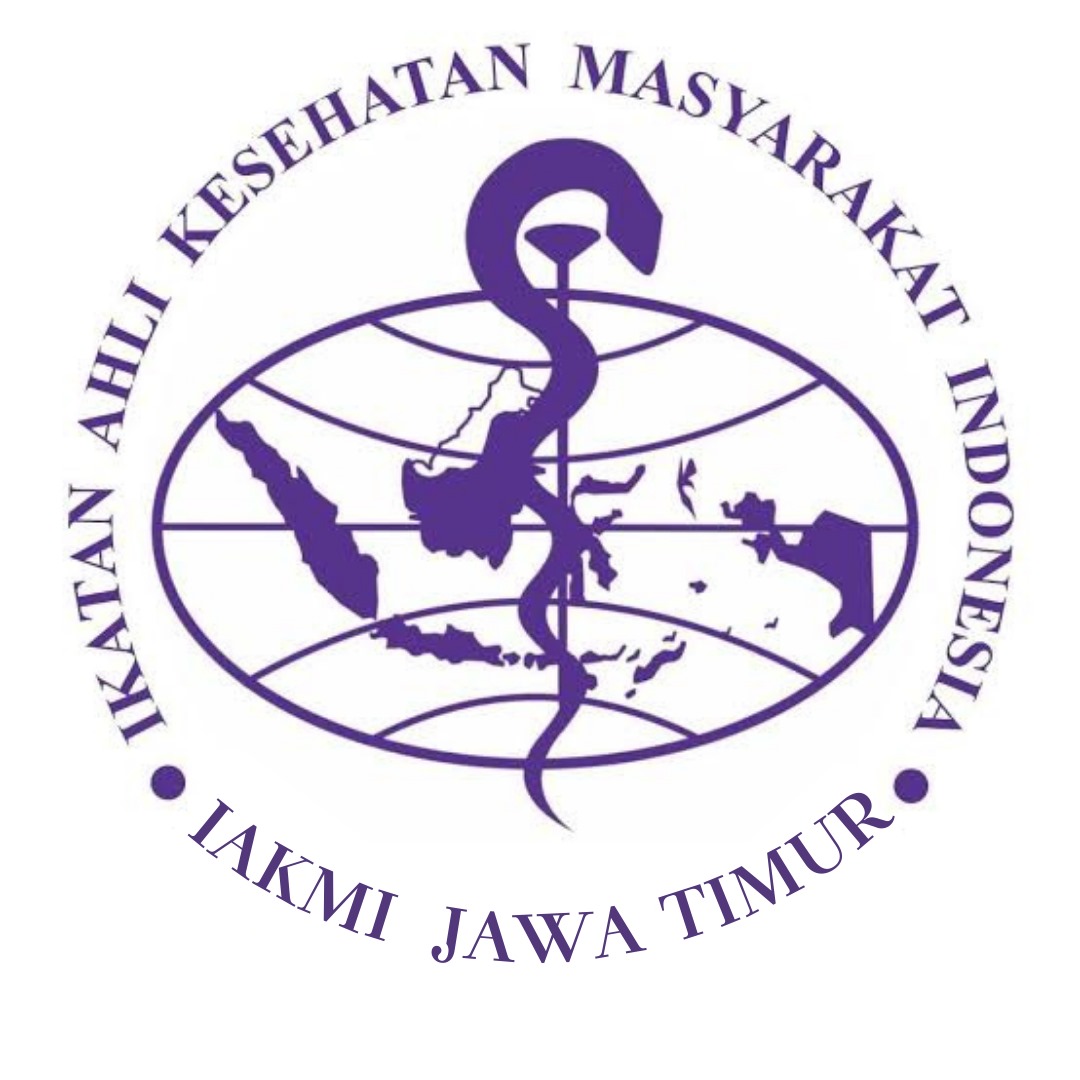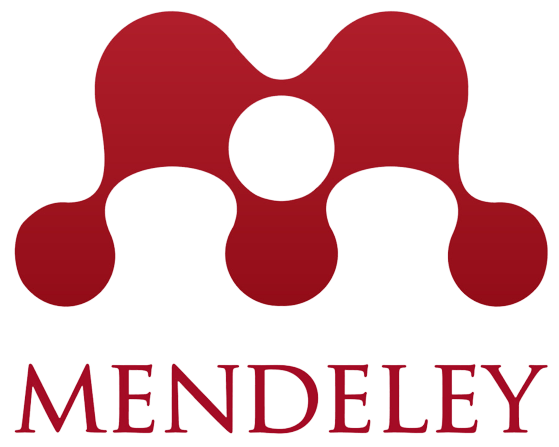Submissions
Submission Preparation Checklist
As part of the submission process, authors are required to check off their submission's compliance with all of the following items, and submissions may be returned to authors that do not adhere to these guidelines.- The submission has not been previously published, nor is it before another journal for consideration (or an explanation has been provided in Comments to the Editor).
- The submission file is in OpenOffice, Microsoft Word, RTF, or WordPerfect document file format.
- Where available, URLs for the references have been provided.
- The text is single-spaced; uses a 10-point font; employs italics, rather than underlining (except with URL addresses); and all illustrations, figures, and tables are placed within the text at the appropriate points, rather than at the end.
- The text adheres to the stylistic and bibliographic requirements outlined in the Author Guidelines, which is found in About the Journal.
- If submitting to a peer-reviewed section of the journal, the instructions in Ensuring a Blind Review have been followed.
Author Guidelines
MEDIA GIZI & KESEHATAN MASYARAKAT (MGK) only publish original articles and literature reviews related to nutrition and public health disciplines. Articles will be considered for publication on the condition that they have never been published or submitted to another journal. Articles can be classified as literature reviews that can help readers obtain information on nutrition and public health issues. Articles should also support the advancement of science, education, and the development of nutrition and public health practices. Manuscripts will be published in English, therefore the author is obliged to ensure that the submitted manuscripts are in accordance with the rules of writing in English and there are no errors in writing words. The length of the submitted manuscripts must also be proportional.
Due to editorial policy, each article will be reviewed using a blinded method, so each manuscript submission must prepare:
- Title Page
- Body Manuscript
Manuscripts are submitted in softcopy at the address:
https://e-journal.unair.ac.id/MGK/about/submissions
Manuscripts must be typed using Microsoft Word, Times New Roman font, 14 pt size for titles, and 10 pt for non-titles, singlespace (1.0) with 2.5 cm left, right, top, and bottom margins. Titles should be typed in bold, while Latin names should be in italics. The length of the article should not be less than 7 pages and not more than 13 pages. Paper size A4 (210 x 297 mm). The author must also follow the guidelines for drafting the manuscript according to the type of manuscript to be published.
TITLE PAGE
- Manuscript Title: Must be informative. The maximum title consists of 20 words which are capitalized in the first letter of each word according to Enhanced Spelling and center position. Title is written in English (not italicized).
- Author: Includes author's full name without title, author affiliation name and affiliation address. It is written in sequence using the superscript number (1).
- Contribution of each author in the manuscript: Write down the contribution of each author in completing the manuscript.
- Institution: The agency of origin of each author.
- Correspondence Address: Contains details of the data of the responsible author with detailed address and e-mail (consisting of full name, name of institution, address, telephone number, fax number, and email address).
BODY MANUSCRIPT
MEDIA GIZI KESMAS (MGK) accepts two types of manuscripts, namely manuscripts from research results and manuscripts from literature reviews with different writing formats. The writing format of each manuscript is as follows:
- FORMAT OF ORIGINAL ARTICLE MANUSCRIPT
- Manuscript title: Must be informative. The maximum title consists of 20 words which are capitalized in the first letter of each word according to Enhanced Spelling and center position. Title is written in English (not italicized).
- Abstract: The abstract must be structured with a short description (containing no more than 300 words, formatted in a single space, and only one paragraph). Abstracts must be written in English. Footnotes, references, and abbreviations are not used in the abstract. Abstract in the research report must consist of "Background", "Objective", "Methods", "Results", and "Conclusion" typed in no italic in one paragraph.
- Keywords contain 3-5 words and / or phrases and should be written below the abstract. Keywords must be written in English with words or sentences in accordance with scientific standards.
- Introduction consists of background to the problem, formulation of the problem, objectives and benefits of the research.
- Methods contain clear descriptions of the tools and materials used and research schemes and methods that are useful for other researchers to replicate and check validity if necessary. Reference should be given to the method used. Studies using animal or human subjects must provide evidence of applicable research ethics.
- Results and discussions must be presented accurately and concisely in a logical order with the number of tables and illustrations needed to summarize the important results of the study. Tables must be created horizontally (without vertical line separation). Mathematical equations must be written clearly. If math symbols are not available on the computer, they can be handwritten in pencil. Tables, illustrations, and photographs must be quoted in the manuscript sequentially and separated from the text of the manuscript. Each table, graph, and image must not be more than 4. Titles and detailed descriptions of illustrations (pictures, graphics) are written in the legend for illustration, not in the illustration. All non-standard abbreviations used should be described in footnotes. The discussion explains the meaning of the research results, does not repeat the results, how the reported results solve problems, differences and similarities with previous studies, and the possibility of developing studies. This section should cover the strengths, weaknesses and conclusions of the research results.
- Conclusion is the answer to the question formulation that is asked at the end of the introduction. Conclusions should be based on the results and discussions described previously. Add suggestions or feedback for further research.
- Acknowledgments for all research contributors, if any, should be stated briefly on the manuscript prior to reference.
- Conflict of Interest and Funding Disclosure contains information regarding conflicts of interest and sources of funding. Conflict of interest describes a situation where the author has personal or organizational interests that may impact decision making in the interests of third parties. Funding disclosure can be written regarding the institution that provides sponsorship or funding. If there is no conflict of interest and funding disclosure then it can be written "None."
- Author Contributions contains a description regarding the role of each author in writing this article. Author contribution roles: conceptualization, data curation, formal analysis, funding acquisition, investigation, methodology, project administration, resources, software, supervision, validation, visualization, roles/writing-original draft, writing-review & editing.
- Bibliography must be arranged in accordance with the Harvard Style system as the format contained in the Mendeley program (Harvard reference format 1 (deprecated)). Journal managers advise writers to use Mendeley or other specific reference writing applications (for example: Endnote, Zotero, ReffWorks). Please use Mendeley as Manager Citation and select Harvard reference format 1 (deprecated). For Submit, we require the author to include a BibTex file which can be saved from Mendeley as a complementary file. Bibliography is written according to the Harvard reference format 1 (deprecated), must be valid, 80% come from publications in the last 10 years and contain at least 20% primary references (from journals, theses, dissertations and patent documents). Unpublished sources, such as preparatory manuscripts or personal communication cannot be accepted as a bibliography. Only sources cited in the text appear in the bibliography. Author names must be written consistently. Journal numbers and volumes must be included. The edition, publisher, city, and page numbers of the textbook must be included. Bibliography originating from the internet, including access times and web addresses, should also be included. Abbreviations for the journal name must be written in full. All research reports must have more than 20 references.
- FORMAT OF LITERATURE REVIEW ARTICLE MANUSCRIPT
- Manuscript title: Must be informative. The maximum title consists of 20 words which are capitalized in the first letter of each word according to Enhanced Spelling and center position. Title is written in English (not italicized).
- Abstract: The abstract must be structured with a short description (containing no more than 300 words, formatted in a single space, and only one paragraph). Abstracts must be written in English. Footnotes, references, and abbreviations are not used in the abstract. Abstract in the research report must consist of "Background", "Objective", "Methods", "Results", and "Conclusion" typed in no italic in one paragraph.
- Keywords contain 3-5 words and / or phrases and should be written below the abstract. Keywords must be written in English with words or sentences in accordance with scientific standards.
- Introduction consists of background to the problem, formulation of the problem, objectives and benefits of the research.
- Methods contain clear descriptions of the tools and materials used and research schemes and methods that are useful for other researchers to replicate and check validity if necessary. Literature review manuscripts can include methods or not, according to needs.
- Results and discussions contain the details of the subject discussed or the description of the review, do not repeat the review, how the reported literature review can solve the problem, as well as differences and similarities with previous studies. This section must cover the advantages, disadvantages, and conclusions of the results of the study. Tables must be created horizontally (without vertical line separation). Mathematical equations must be clearly written. If a mathematical symbol is not available on the computer, the symbol can be handwritten in pencil. Detailed titles and descriptions of illustrations (pictures, graphics) written in legend for illustration, not in the illustration. All non-standard abbreviations used must be explained in the footnotes. The table title must be written above the table and any notes below the table body. The title of the figure/chart is placed below the body of the figure/chart. Write table numbers and figures/graphics sequentially according to their appearance in the text. Each table, graph, and image must not be more than 4. This section should cover the strengths, weaknesses and conclusions of the research results.
- Conclusion is the answer to the question formulation that is asked at the end of the introduction. Conclusions should be based on the discussion previously described. Add suggestions or feedback for further research.
- Acknowledgments for all research contributors, if any, should be stated briefly on the manuscript prior to reference.
- Conflict of Interest and Funding Disclosure contains information regarding conflicts of interest and sources of funding. Conflict of interest describes a situation where the author has personal or organizational interests that may impact decision making in the interests of third parties. Funding disclosure can be written regarding the institution that provides sponsorship or funding. If there is no conflict of interest and funding disclosure then it can be written "None."
- Author Contributions contains a description regarding the role of each author in writing this article. Author contribution roles: conceptualization, data curation, formal analysis, funding acquisition, investigation, methodology, project administration, resources, software, supervision, validation, visualization, roles/writing-original draft, writing-review & editing.
- Bibliography must be arranged in accordance with the Harvard Style system as the format contained in the Mendeley program (Harvard reference format 1 (deprecated)). Journal managers advise writers to use Mendeley or other specific reference writing applications (for example: Endnote, Zotero, ReffWorks). Please use Mendeley as Manager Citation and select Harvard reference format 1 (deprecated). For Submit, we require the author to include a BibTex file which can be saved from Mendeley as a complementary file. Bibliography is written according to the Harvard reference format 1 (deprecated), must be valid, 80% come from publications in the last 10 years and contain at least 20% primary references (from journals, theses, dissertations and patent documents). Unpublished sources, such as preparatory manuscripts or personal communication cannot be accepted as a bibliography. Only sources cited in the text appear in the bibliography. Author names must be written consistently. Journal numbers and volumes must be included. The edition, publisher, city, and page numbers of the textbook must be included. Bibliography originating from the internet, including access times and web addresses, should also be included. Abbreviations for the journal name must be written in full. All research reports must have more than 25 references.
All images, illustrations and photos displayed must be relevant, informative, concise, and source (if any), provided in files (in JPG, JPEG or TIFF format). If using a patient's photo, this must be accompanied by a signed publication consent form. A copy of the license must be accompanied by the publication manuscript.
The editor has the right to edit the manuscript, match the manuscript with the availability of the journal, and ensure conciseness, clarity, and consistency of writing. All manuscripts received and illustrations included will become the permanent property of the publisher, and will not be published elsewhere in full or in part, in print or electronically, without the written permission of the publisher. All data, opinions or statements that appear on the manuscript are the responsibility of the authors. Thus, the publisher, editorial board, and all journal officers of MEDIA GIZI KESMAS (MGK) will not be responsible or liable for the consequences of inaccurate or incorrect data, opinions or statements.
Article citation format
Book:
Last name, Abbreviation Middle and First Name (Year) Title, City: Name of Publisher Example: Dahlan (2010) Besar Sampel dan Cara Pengambilan. Jakarta: Salemba Medika.
Book collection of articles:
Last name, Abbreviation Middle and First Name (Year) Title. 1st edition, 1st edition). City: Name of Publisher. doi.
Example: Brown, J. E. (2011) Nutrition Through The Life Cycle. 4th edn, Cengage Learning. 4th ed. USA: Cengange Learning. doi: 10.1111/j.1753- 4887.2004.tb00011.x.
Articles in the book collection of articles:
Last name, Abbreviations Middle and First Name (Year), 'Title', Journal Name, Volume (Number), Pages.
Example : Aziezah, Nur dan Adriani, M. (2013) ‘Perbedaan Tingkat Konsumsi dan Status Gizi Antara Bayi dengan Pemberian ASI Eksklusif dan Non ASI Eksklusif', Media Gizi Indonesia, 9(1), pp. 78–83.
Articles in journals or magazines :
Last name, Abbreviation of Middle and First Name (Year) 'Article Title', Vol, page. Example : Sugiarti E, Zulaekah S, P. D. . (2011) ‘Faktor-Faktor yang Berhubungan Dengan Pemberian ASI Eksklusif', 4, pp. 195–206.
Writing / news in newspapers (without author's name):
Last Name, Abbreviation Middle and First Name (Year) 'Article Title, Newspaper Name, date, page.
Example : Simpson, L (1997) ‘Tasmania's railway goes private', Australian Financial Review, 13 October, p. 10.
Official document :
Name of institution (Year) Document Title, Edition.
Example : BPS (2018) Jumlah Penduduk dan Laju Pertumbuhan Penduduk Menurut Kabupaten/Kota di Provinsi Jawa Timur, 2010, 2016 dan 2017.
Skripsi, Tesis, Disertasi, Laporan Penelitian:
Nama belakang, Singkatan Nama Tengah dan Depan (Tahun) Judul. Institusi. Example : Elastri, A. (2015) Pengaruh Substitusi Ekstrak Kulit Buah Naga Merah terhadap Kualitas Es Krim. Universitas Negeri Padang.
Internet (individual work) :
Last name, Abbreviations Middle and First Name (Year), 'Title', date of access, <site name> Example: Albanese, A (2009) ‘Fairer compensation for air travellers, media release, 29 January, Minister for Infrastructure, Transport, Regional Development and Local Government', dilihat 30 Januari 2009,
<http://www.minister.infrastructure.gov.au/aa/releases/2009/January/AA007_2009.htm >
Internet (articles in online journals):
Last name, Abbreviations Middle and First Name (Year) 'Article Title', Journal Name, Vol, No, page, date accessed, <site address>
Example: Daniel, TT (2009) 'Learning from simpler times', Risk Management, vol. 56, no. 1, pp. 40-44, dilihat 30 Januari 2009, <http://proquest.umi.com/>
Internet (personal email) :
Last name, Abbreviations Middle and First Name (Year) Email Subject, website address, Email Recipient Name, date of access.
Example: Yahya, H (2005) ‘Realitas dan Pancaindra Anda',
http://www.yahya.com, info@hyahya.com., 27 Januari 2008
Copyright Notice
Media Gizi Kesmas by Unair is licensed under a Creative Commons Attribution-ShareAlike 4.0 International License.
- The journal allows the author(s) to hold the copyright and to retain the publishing right of the article without restrictions.
- The legal formal aspect of journal publication accessibility refers to Creative Commons Attribution-Share-Alike (CC BY-SA).
- The Creative Commons Attribution-Share-Alike (CC BY-SA) license allows redistribution and re-use of a licensed work on the conditions that the creator is appropriately credited and that any derivative work is made available under "the same, similar or a compatible license”. Other than the conditions mentioned above, the editorial board is not responsible for copyright violations.



















